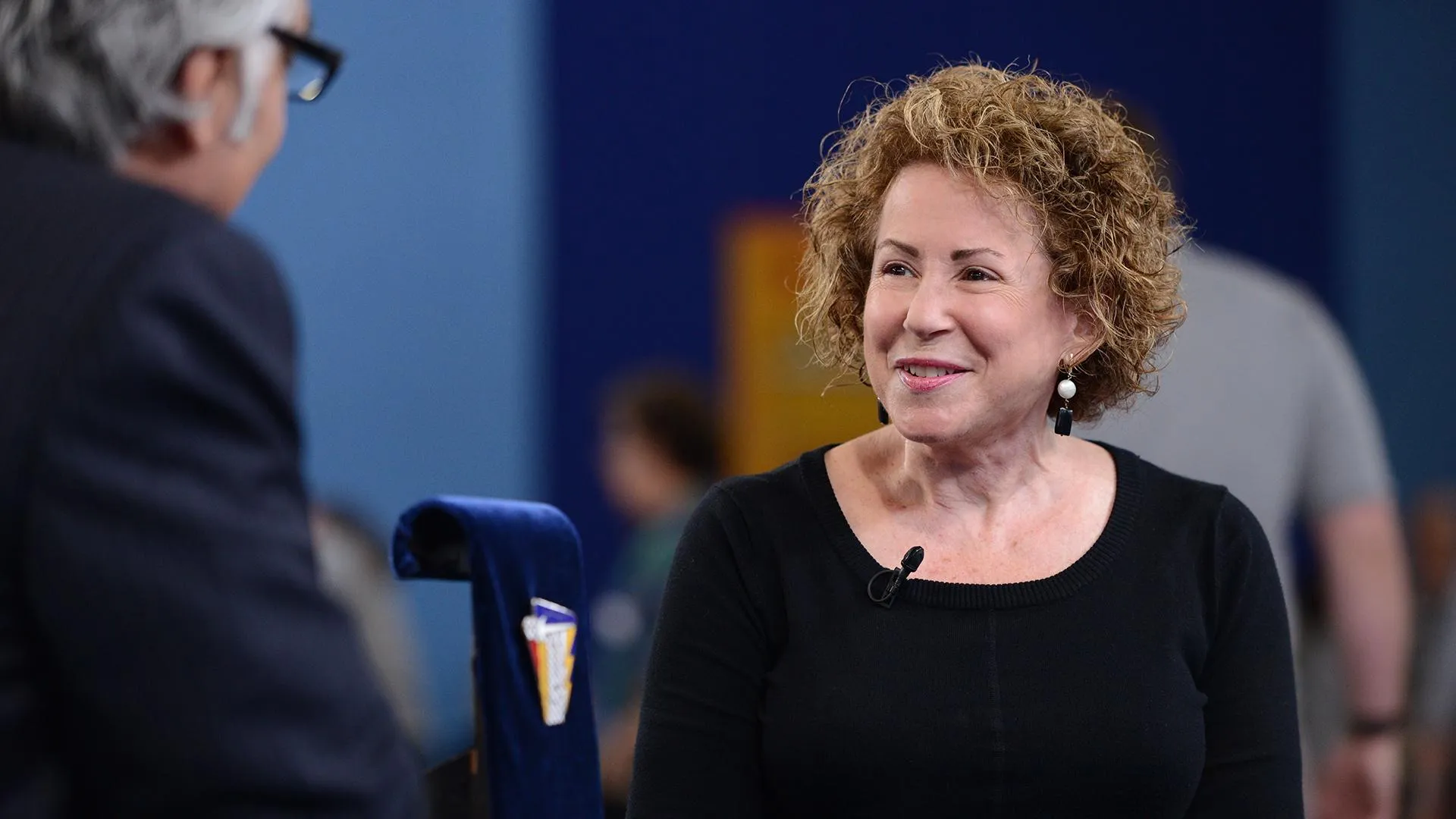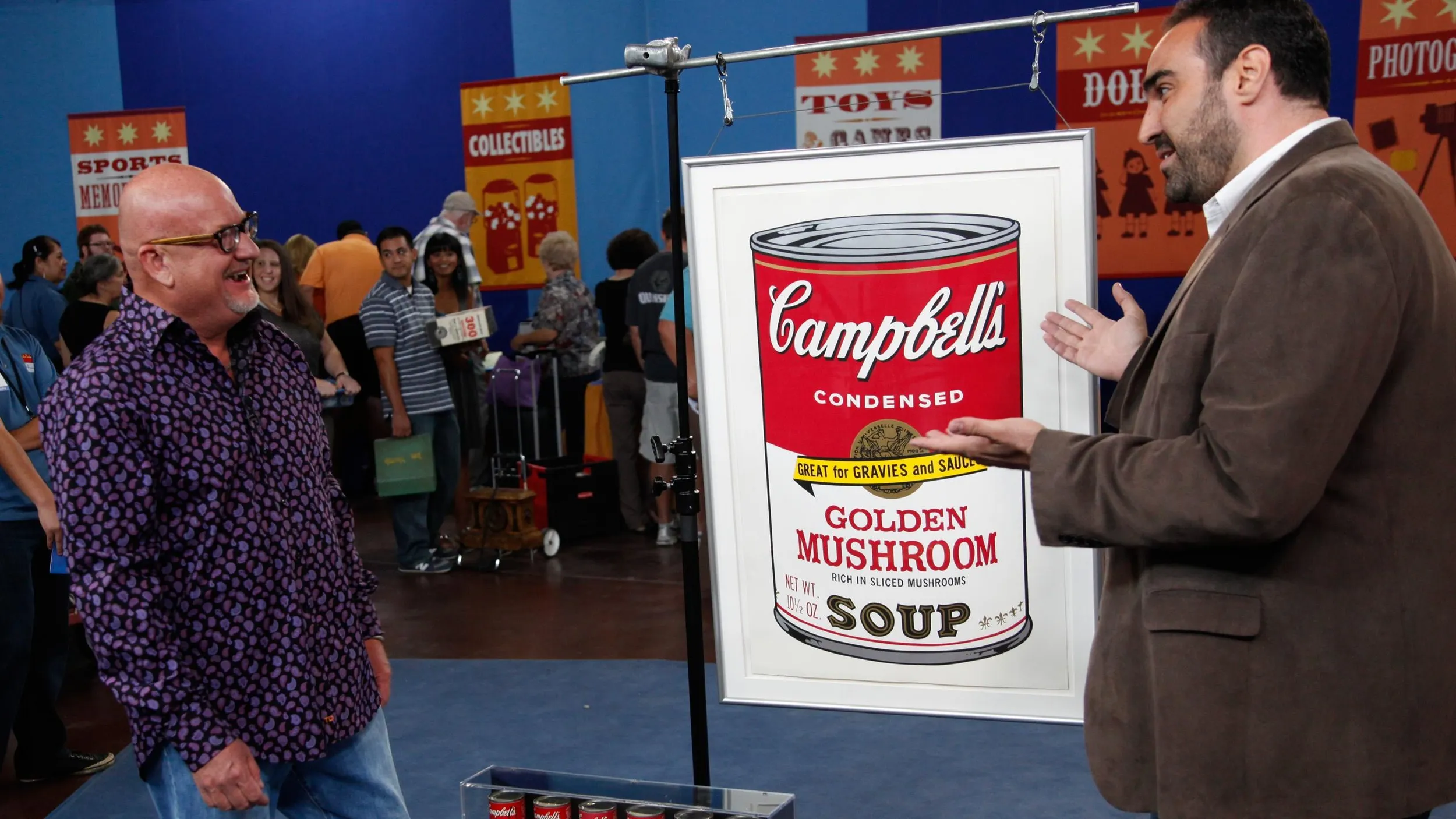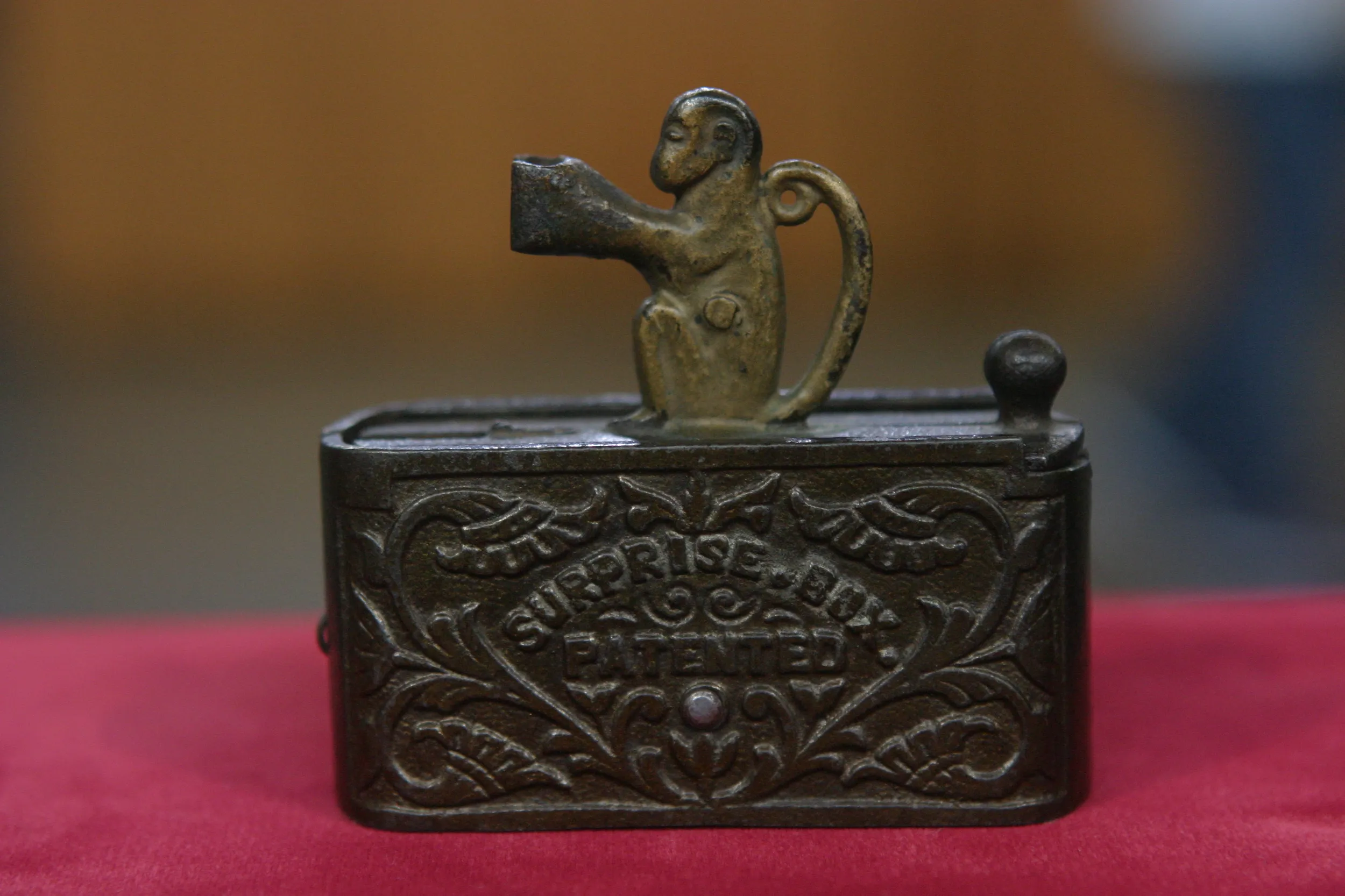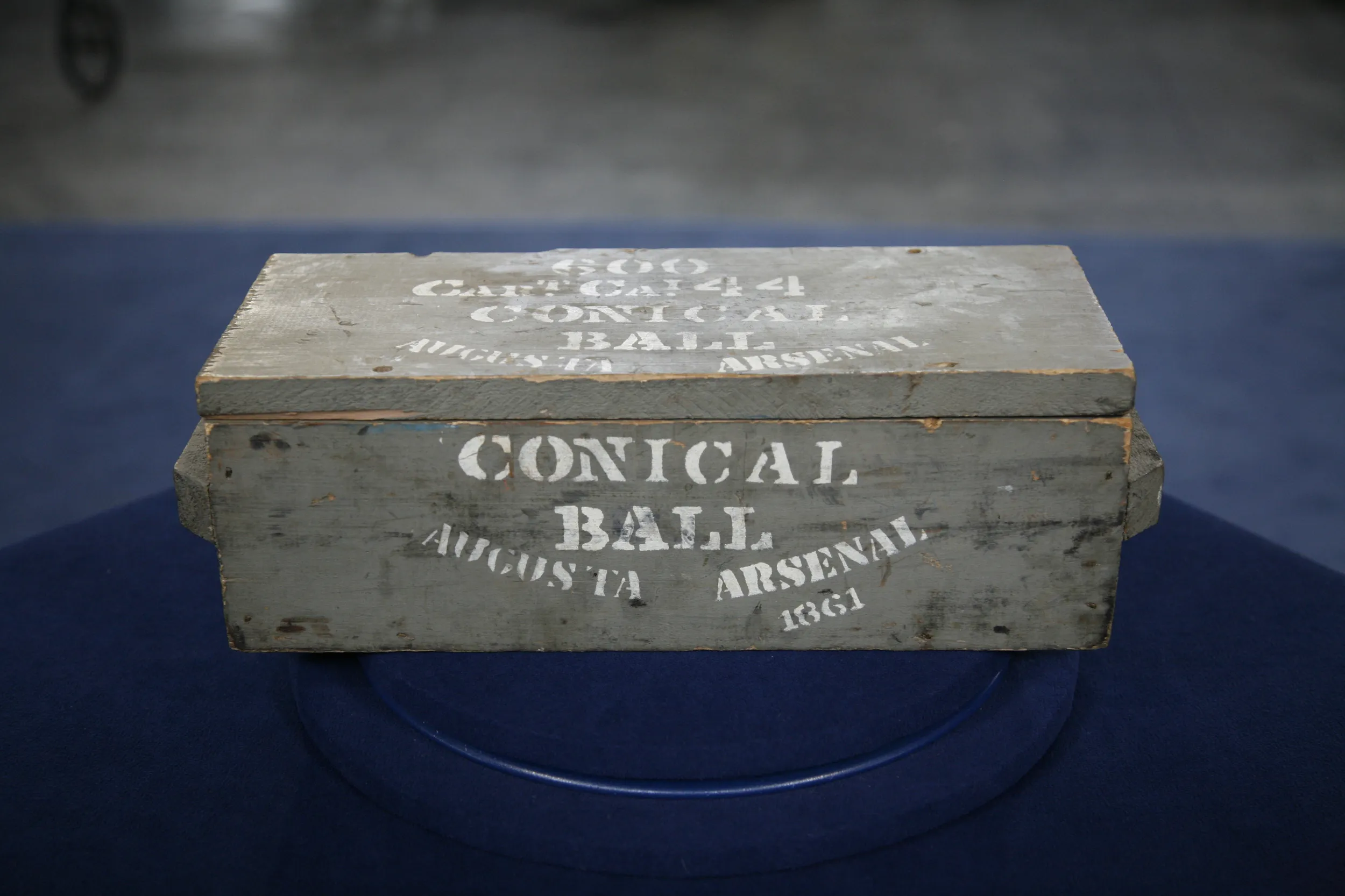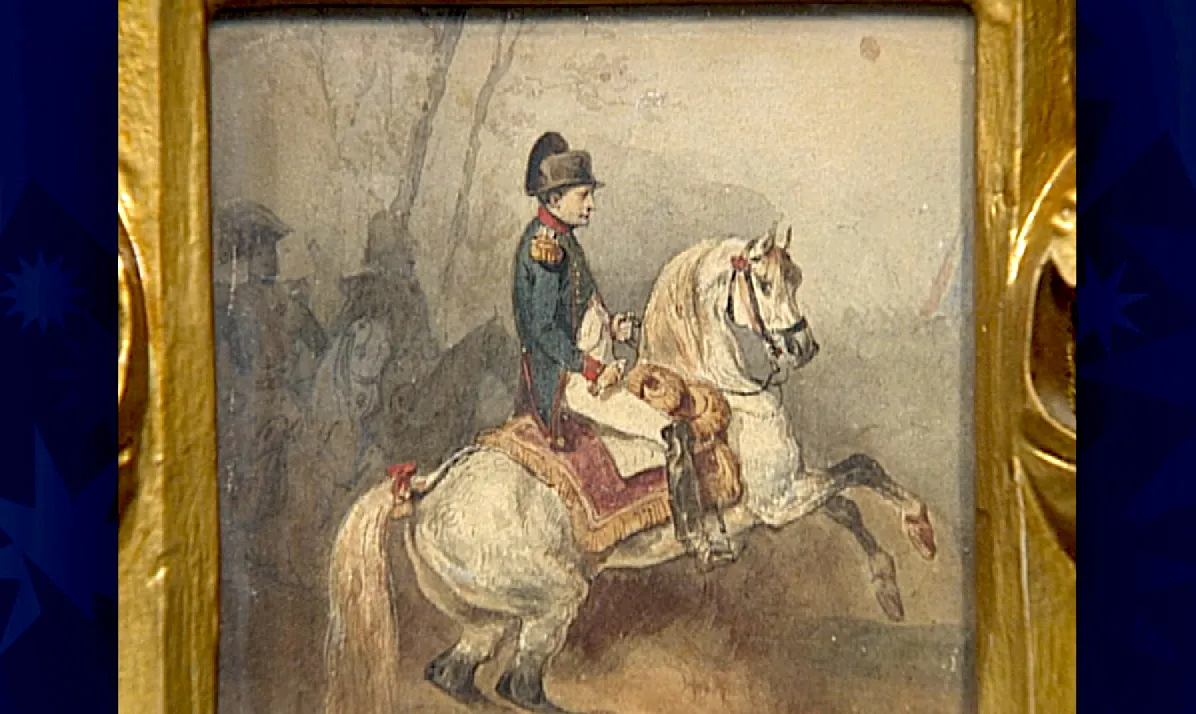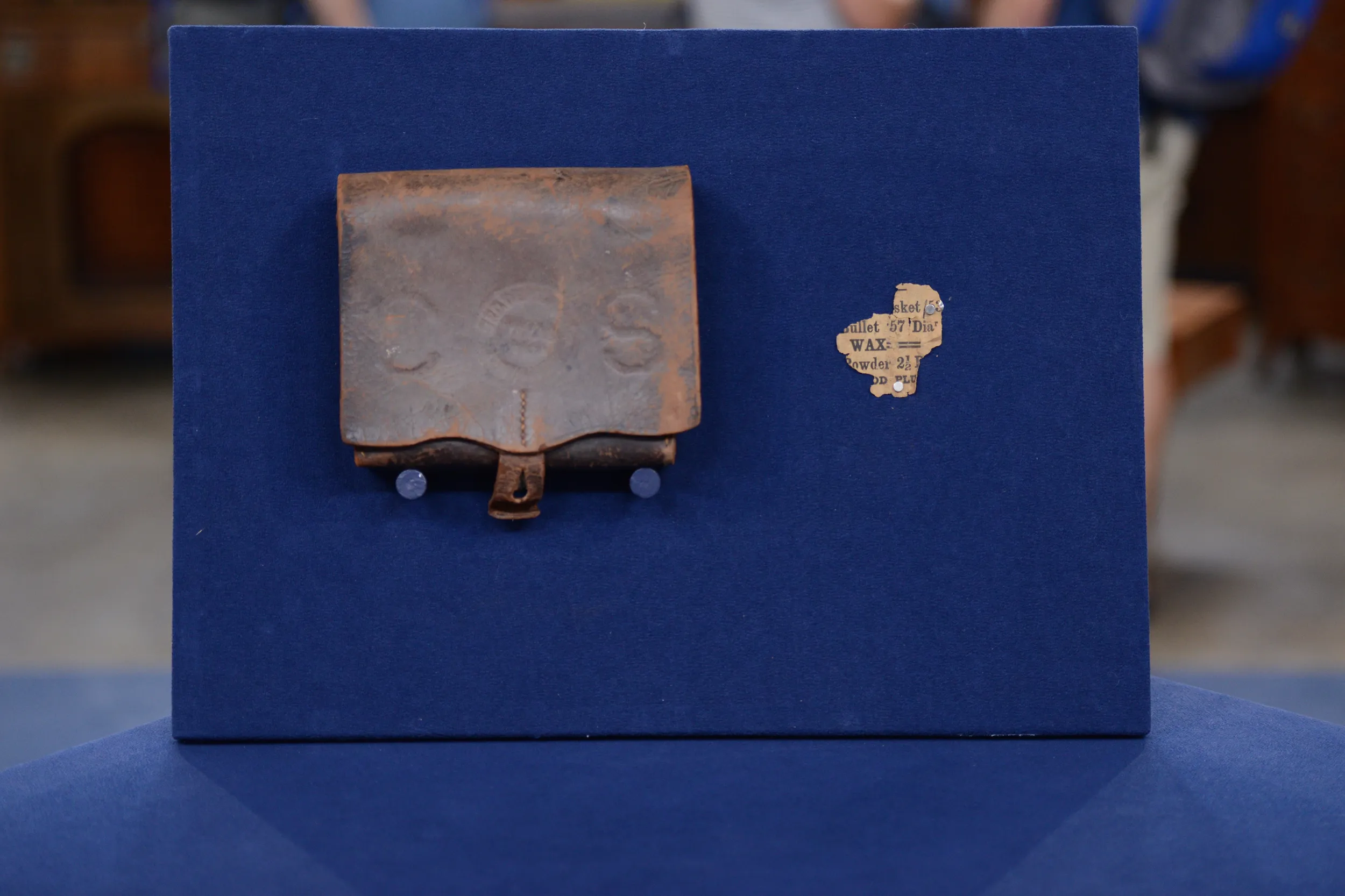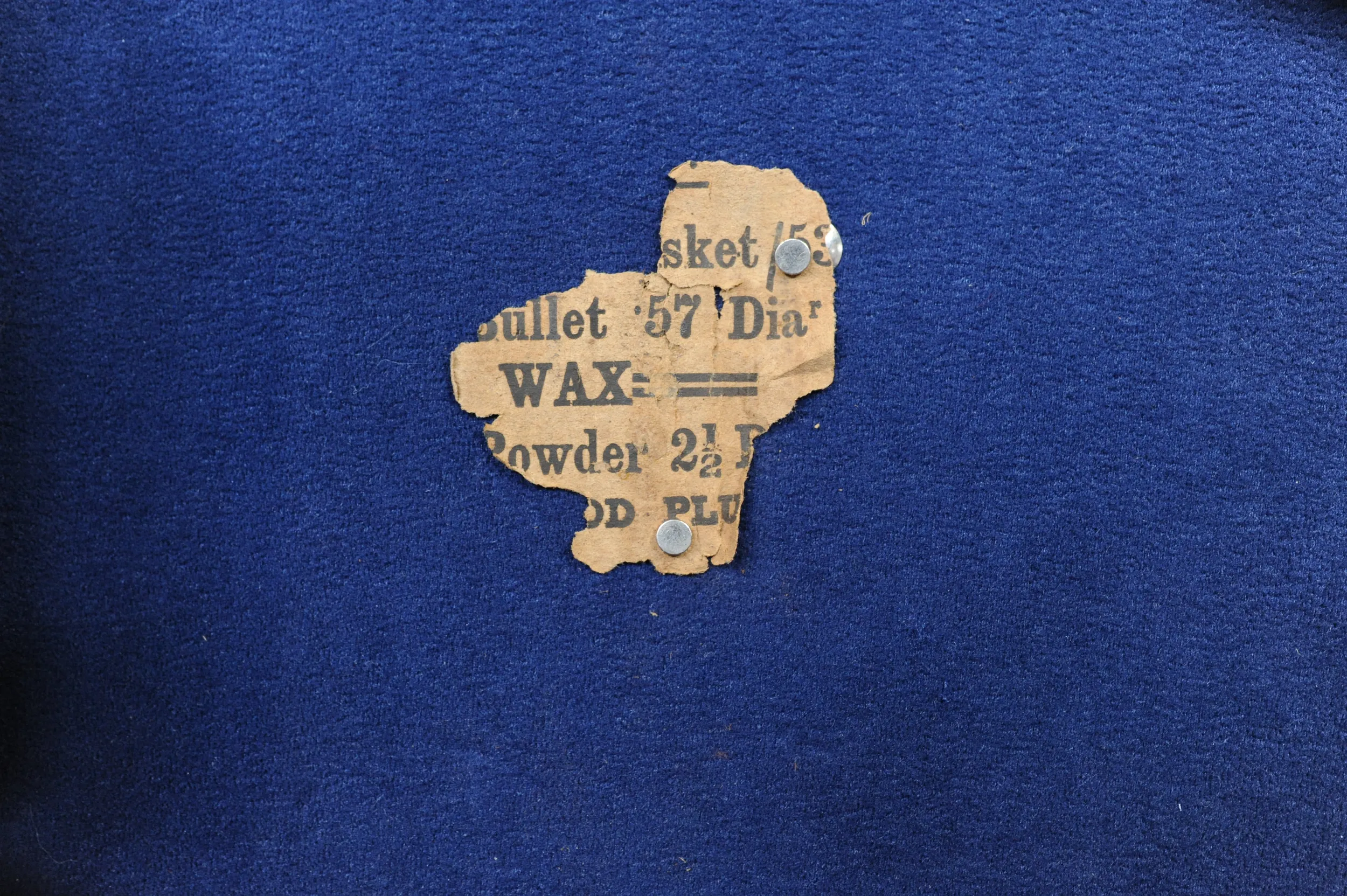GUEST: I brought in a collection of Civil War memorabilia that belonged to my great-great-grandfather. I know he fought at the Battle of Shiloh and the Battle of Vicksburg. So to me it seems like something you would keep your materials in, maybe your field notes, something like that.
APPRAISER: Did he serve after 1863, the Battle of Vicksburg?
GUEST: He was captured by the Union, and then released and paroled to go home. So he walked home from Mississippi back to Texas, and then I think he re-enlisted back into the army. And I think he fought until the end, but he stayed in Texas.
APPRAISER: What part of Texas?
GUEST: He's from Houston, Texas.
APPRAISER: Well, have you ever been on Travis Street in Houston?
GUEST: Downtown, yeah.
APPRAISER: Well, during the Civil War, there were two buildings on Travis Street that were leased to the ordnance department.
GUEST: Okay.
APPRAISER: And they produced leather goods.
GUEST: Okay.
APPRAISER: They're one of the rarest of all Confederate leather goods.
GUEST: Okay.
APPRAISER: This is actually for holding cartridges. This one is what is referred to by collectors as a Houston depot. It is a copy of the Union cartridge boxes of the day. There are several things that we look for that let us know it's Confederate rather than Union, if you don't have this big bold "CS" on the outside cover. If we open up the flap, we notice on the bottom of the box, we have a finial. And the finial's made of lead.
GUEST: Okay.
APPRAISER: Almost all of the Union finials are made of brass. And most of the time that little leather tab that goes over it is broken off, so it's wonderful that we do have that. Now for the elephant in the room. We have the huge "CS" lettering.
GUEST: Right.
APPRAISER: It's the most vividly clear and beautiful stamping that they ever used. This one's a little hazy, but that just happens because every strike isn't perfect.
GUEST: Right.
APPRAISER: In the middle, it would have said, "Texas, 1864."
GUEST: Okay.
APPRAISER: Which is why I asked you when he went home. So that lets us know that this is the one that he used when he got released and sent back home.
GUEST: Okay.
APPRAISER: It's a fantastic box. When I opened it up to show one of our producers, I saw a piece of paper. It's actually a label for Enfield rifle cartridges. And that one little bit of paper lets us know what he was using with his musket, which is interesting, because the Enfield is an English-made gun. The musket would have been a .577 caliber. And it's just a wonderful little addition, an unexpected surprise when we opened that up.
GUEST: Okay.
APPRAISER: If this was a standard Union cartridge box, its counterpart, it would probably be worth between $300 and $500.
GUEST: Okay.
APPRAISER: This one is a whole different critter.
GUEST: Okay.
APPRAISER: This one today would retail for about $25,000.
GUEST: Oh, my gosh. Wow. Wow, that's amazing. I don't think the family had any idea. I mean, amongst all the things that we had, I don't think we understood the value of this item. Wow.
APPRAISER: Before today, the collectors' market knew of four of these.
GUEST: Oh, my gosh.
APPRAISER: You've got the fifth.
GUEST: Oh, my gosh. Wow. Whew! That is... yeah, that's amazing. That's great. (chuckling) Holy cow!

